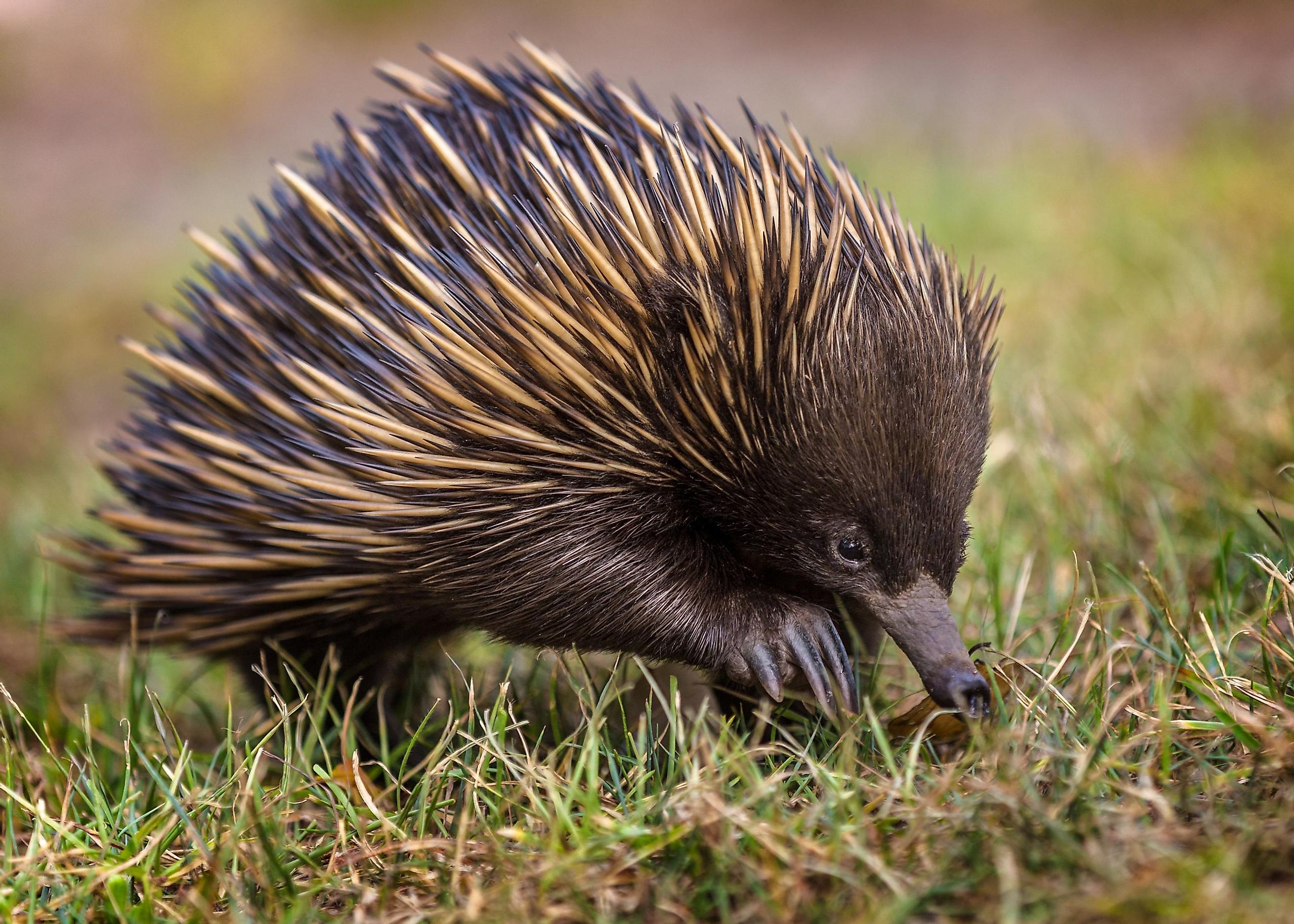
Echidna
With its long snout, fearsome-looking claws, and distinctive spines, the echidna is an animal that demands attention. However, this charismatic but relatively little-known animal still baffles scientists to this day, as it is a difficult species to study in the wild. Largely unchanged since first evolving in prehistoric times, the echidna’s story is one of determination to survive in the face of hardship, enduring environmental changes that have wiped other animals from the history books. However, like many species today, the echidna is in danger of extinction, facing several largely human-induced threats.
Physical Characteristics
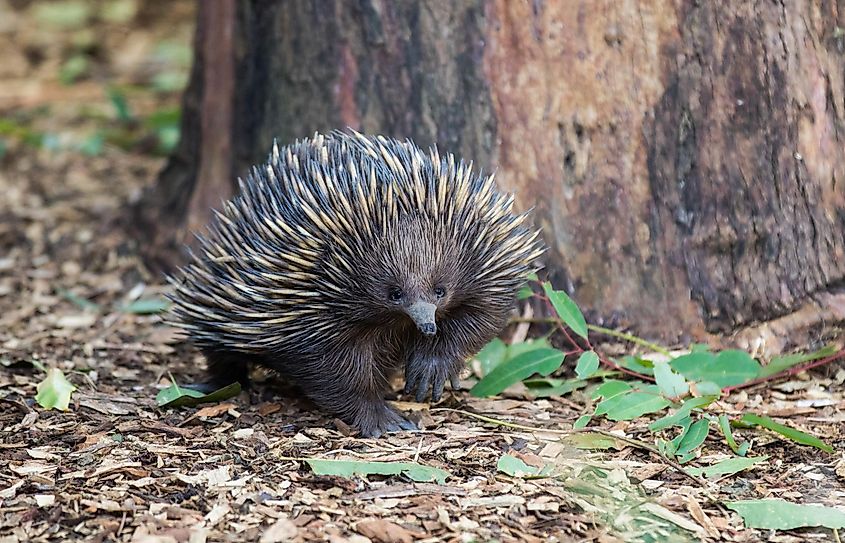
There are four species of echidna, the short-beaked, eastern long-beaked, western long-beaked, and Sir David’s long-beaked. All are medium-sized animals, generally around the size of a large cat, with females being somewhat smaller than males. However, the western long-beaked echidna (Zaglossus bruijnii) can often reach 77.5 cm and weigh up to 36 lbs, with one individual recorded at 100 cm. An echidna’s fur ranges from reddish to dark brown or black, but perhaps its most distinctive feature is the intimidating array of spikes that adorn its back. These are, in fact, modified hairs that vary in color from cream to black. As the echidna is a generally unthreatening animal, they are used to protect it when faced with danger, as it rolls into a ball or burrows into the ground, leaving only the spines exposed. They also serve a secondary function, acting as camouflage to help the echidna blend into its surroundings.
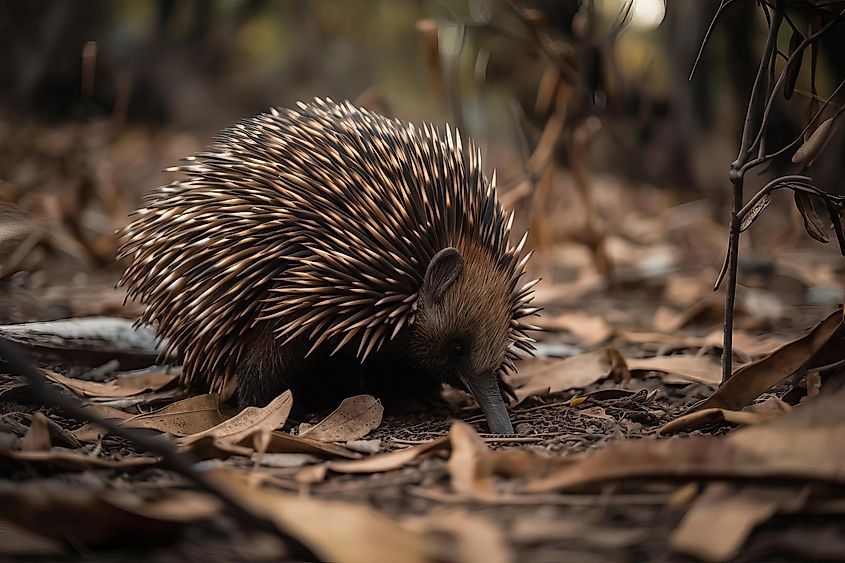
The echidna’s protruding snout, measuring 7-8 cm, is used to investigate rotten logs and termite mounds, with termites and ants forming the basis of its diet, although some species are also known to eat worms and insect larvae. The echidna uses the formidable claws on its front feet to tear open logs and mounds while also utilizing them to dig burrows. The number of claws can vary even between individuals of the same species, but it is typically either three or five. Their hind feet point backward, an evolutionary feature that allows the soil to be pushed behind the animal when burrowing, but they are also used for grooming. An echidna’s mouth is small and contains no teeth, so it grinds its food between its tongue and the roof of its mouth. However, despite all these unusual features, perhaps the echidna’s most distinctive trait is the fact that while being a mammal, females lay eggs rather than give birth to live young, like most mammals. There are only five such animals in the world, the four species of echidna and the platypus, with these unusual egg-laying mammals being known as monotremes.
Habitat And Behavior
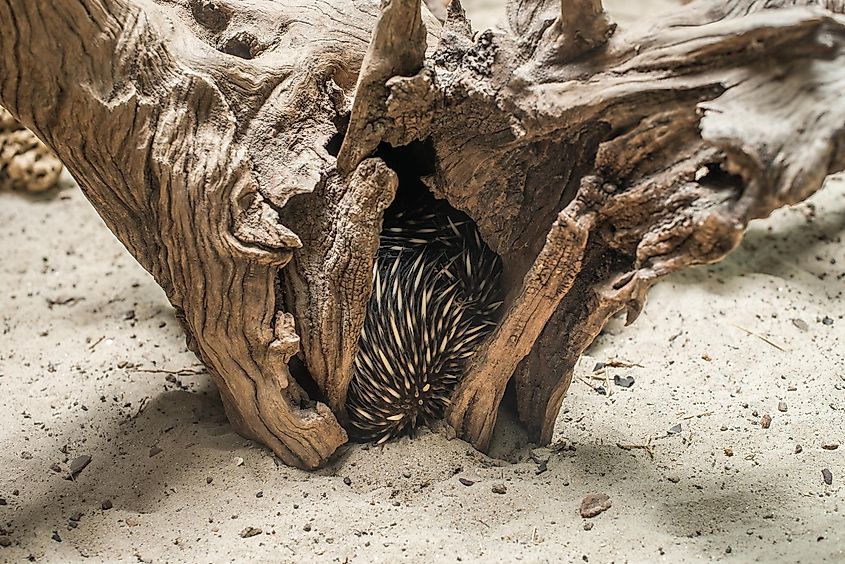
Echidnas are found in mainland Australia, the Australian island of Tasmania, Indonesia, and Papua New Guinea, inhabiting scrubland, woodlands, grasslands, and montane forests, where they hide in hollow logs or under vegetation. They favor areas with loose topsoil, as digging for food and shelter is key to their continued existence, though the echidna’s excellent digging skills mean it can find its way through hard-packed soil as well. Echidnas are active both during the day and at night, slowly searching the ground for food, but will take shelter at midday to avoid elevated temperatures, as they are unable to tolerate extremes of temperature. They have few sweat glands and are unable to pant, an ability that other animals use to shed excess heat. However, to counteract this, some species, such as the short-beaked echidna (Tachyglossus aculeatus) have evolved the ability to blow mucus bubbles from their beak, which scientists believe aids in thermoregulation, as when the bubbles burst, the beak is covered in the mucus, thus cooling the body.
An echidna’s body temperature is unusually low but variable, ranging from 84 to 90 degrees Fahrenheit. Echidnas are not territorial animals, unlike, for example, wolves, which defend their territory against intruders, and instead range over a large area. When searching for food, an echidna will use electroreceptors in its sensitive nose to home in on the electrical signals produced by the muscles of its prey. However, unlike the platypus, whose nose contains an impressive 40,000 electroreceptors, an echidna’s nose only contains between 400 and 2,000, depending on the species. This is because electroreception is less useful in terrestrial animals than water-based species, as air limits the flow of electrical current, but which is transferred more effectively in water. However, echidnas are also able to swim, using their snout like a snorkel to breathe.
Breeding And Reproduction
Echidnas breed between July and August, with females laying one leathery egg per year, which is around the size of a grape. The gestation period is around twenty days. The egg is kept in a pouch on the mother’s belly, similar to a kangaroo, where, after ten days, it hatches into a tiny animal the size of a jellybean. Fun fact: Baby echidnas are known as puggles, a cute name for a cute critter. Echidnas do not give milk the way most mammals do, from nipples, instead secreting it from a special gland in the pouch, which the puggle then laps up. The puggle will remain in its mother’s pouch for around fifty days, after which it is placed into a burrow. The mother will then return to her baby every five to ten days to feed it, stopping when it is around seven months old, at which time it will fend for itself. Echidnas are long-lived animals, with lifespans ranging from fifteen to forty years, although one wild specimen has been reliably recorded at 45 years old and a captive specimen at over fifty years.
Threats And Conservation Status
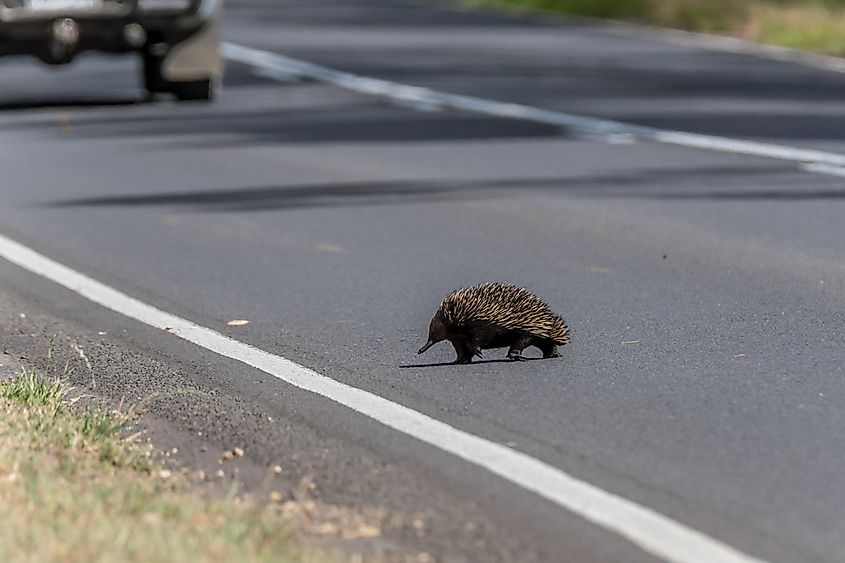
Echidnas are not aggressive animals, favoring hiding rather than directly facing off against predators. These predators include feral cats, foxes, domestic dogs, snakes, and goannas, a type of lizard found in Australia and Southeast Asia. Echidnas are also suffering from habitat loss due to land clearing and development, with, for example, echidna habitat in New Guinea being turned over to small-holder farms and for livestock. As such, Sir David’s long-beaked echidna (Zaglossus attenboroughi) is now only found in an eight-square-mile area of the Cyclops Mountains in New Guinea, with some believing it may even have gone extinct, leading to its IUCN status of critically endangered. This is particularly tragic, as this species was only formally described in 1999, and much of its biology and behavior is still unknown. The western long-beaked echidna is also listed as critically endangered, with a declining population, and the eastern long-beaked echidna (Zaglossus bartoni) is considered vulnerable, as although there are thought to be some 10,000 individuals remaining in the wild, populations are decreasing, and the species has already gone extinct in some parts of its former range. However, the short-beaked echidna is classed as a species of least concern.
Another notable threat is hunting, as echidnas are edible, and while hunters have previously used traditional methods to catch them, they are now increasingly turning to dogs and guns. This is far more effective, as dogs are more efficient hunters, while echidnas have no protection against firearms. Echidnas are also frequently found as roadkill, particularly in Australia.











